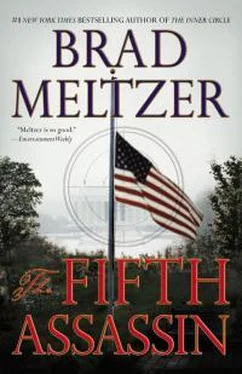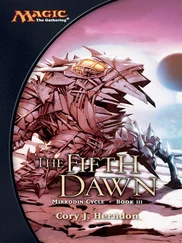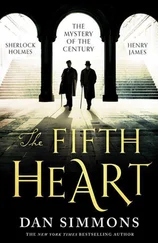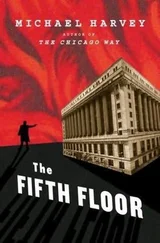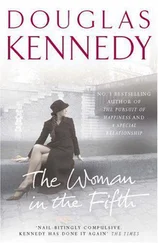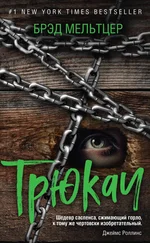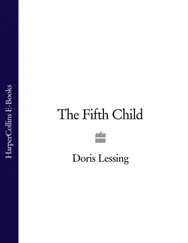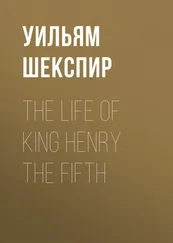“Marshall Lusk,” I whisper.
58
How bad?” the President asked.
A.J. shook his head. He didn’t have to say it.
“So you went to see him?” Wallace asked, sitting on the edge of his desk and careful to never say the word pastor . Sure, they were alone in the Oval, with all three doors closed. But it didn’t take a copy of the Nixon tapes to know that there were always ears in the White House.
“I saw him. And spoke to him. He said he actually met you.”
The President paused at that.
“You don’t remember him?” A.J. asked. “He said it was at Christmas. That you said a prayer together. He was with a rabbi and an imam.”
“You’re kidding, right? You know how many people I say prayers with? Or how many of these I give out?” he added, pointing to the pink carnation on his lapel. It was a trick he stole from President McKinley, who every day used to pluck a carnation from his lapel and hand it as a gift to some lucky citizen. The real trick was that McKinley kept half a dozen carnations in his Oval Office desk.
“Sir, the point is, that’s two in two days. And the only thing they have in common is they’ve both spent time, and said prayers, with you .”
“So you think whoever’s doing this, I’m next?”
“No, but my fear is there’ll be a third attack, then a fourth, and after that…”
A.J. knew better than to finish the sentence.
Leaning there on the edge of his desk, arms crossed at his chest, Wallace looked more annoyed than anything else. For nearly four years, he had begun every morning with a private briefing that informed him about the most active threats against the United States. After the first one, he realized there was a whole different world that he never knew existed. By now, he’d gotten used to it.
But A.J. saw the way Wallace rubbed his thumb and middle finger together.
Even to the President of the United States, there was no threat like a personal one.
“And that doctor you’ve been seeing?” the President finally asked. “He’s been no help?”
“Not with this. For this you need a specialist. Maybe even a surgeon.”
Wallace thought about that. “What are you suggesting?”
“I think we take you out of here. Get you on the chopper, let us put our hands on this guy, and in the meantime, you’ll be safe at Thurmont,” A.J. said, referring to the compound known as Camp David.
“Yeah, I’m not doing that.”
“Sir…?”
“I’ve been in this job for almost four years,” Wallace said as he headed to the small anteroom on the opposite side of the office. Opening the mini-refrigerator, he scooped a handful of frozen Snickers from a silver bowl. “You know how many threats there’ve been?”
“I hear you, sir. And I know moving you is a disruption. But if I’m right about this—”
“Did you hear what I said? I’m the President of the United States. I’m not trashing my schedule, panicking my family, and hiding in a bunker just because some nutcase started seeing secret messages in the crumbs from his morning toast.”
“But what if it’s a nutcase you already know? From high school?”
The President slammed the mini-fridge shut. “What’re you saying, A.J.? You think our doctor’s become a quack?”
“I’m just saying, whoever’s doing this, he seems to know where you’ve been.”
“So does everyone with an Internet connection. My schedule’s posted every single day. So go alert the shift leader and tell them what’s going on. Time to let the rest of the Service do their job.”
“I can do that, sir. I will,” A.J. said, trailing the President back into the Oval and watching him toss back one of the Snickers. A.J. had heard it for years: All Presidents were stubborn. But for Wallace to take a risk like this, it made no sense. “Sir, can I just ask: Is this about tomorrow, about Presidents’ Day?”
Wallace’s gray eyes narrowed. “ What about Presidents’ Day?”
“I’m just saying, I know you want to bring your daughter to the Lincoln Memorial… and I know they’re expecting a big crowd, but—”
The President dug his tongue into his back teeth, freeing some remnant peanuts. His voice was as calm as A.J. had ever heard it. “I have full confidence in the ability of the Secret Service to do its job.”
“I do too, sir. But that doesn’t mean—”
“I have full confidence in the Service,” the leader of the free world repeated. “That means get the hell out of here and find out who’s doing this ,” he growled.
“Of course, Mr. President,” A.J. said, heading for the curved door. “I’ll take care of it.”
59
Tell me about this card,” Tot demanded, gripping the faded ace of spades and studying the familiar crouched eagle on it. The card was heavy and thick, made of a layered cardstock, probably rag paper. “Why’s it so important?”
“Forget the card a moment,” the Diamond pleaded, delicately taking the card from Tot’s hands and placing it on a nearby art table covered with sheer Japanese paper that was used for repairing fine works of art. The gossamer-weight paper was so thin, it was barely visible when applied to the object. “This isn’t about a single card. It’s about the history of cards.”
“Daniel, there are lives on the line here. If you’re telling a story, tell it quickly.”
“What’s the most popular book of all time?”
“The Bible,” Tot said without hesitating.
“Exactly. In our modern world, where everything is constantly changing, it’s simply amazing that the Bible itself has managed to stay pretty much the same— for centuries ,” the Diamond said. “That’s how it is with playing cards.”
“That’s not true. Look at that eagle on the card. Name another pack of cards you’ve seen that on.”
“Forget the eagle and what decorates the cards. I’m talking about what doesn’t change. The modern suit symbols: hearts, diamonds, clubs, spades. In Italy, they used to be called cups, coins, swords, and batons. But those modern symbols—hearts, diamonds, clubs, and spades—those were created in France back in the fifteenth century, by a knight named Étienne de Vignolles.”
“A knight?” Tot asked.
“Not just any knight. One of France’s most famous knights. A man who rode with Joan of Arc herself,” the Diamond explained, noticing the change in Tot’s posture. “This was a knight who served both church and king, and as the story goes—and I’m not saying I believe it—to test his loyalty, each side—church and king—entrusted Vignolles with their greatest secret. Vignolles was the chosen knight . So when it came to decorating the cards… his lasting legacy… he picked his symbols with great care. These days, most historians will tell you that the four suits represent the four classes of medieval society: Hearts were the sign of the church; diamonds were arrowheads, representing vassals and archers; clubs were husbandmen or farmers; and spades were the points of lances and therefore represented the knights, and by extension, the king. Others say Vignolles was just inventing a game, or that the symbols were a key to the knight’s true loyalty. But there are a few who insist that Vignolles, when he was forced to choose between church and king, used the cards as a vehicle to deliver a hidden message.”
“I’m lost. A message to whom?”
“To his fellow knights. To the others who he’d eventually entrust with his secret.” Clearing his throat, the Diamond asked, “Have you ever really examined the court cards in a deck? Why does the king of diamonds have an axe, while all the rest have swords? Why are the jack of hearts, the jack of spades, and the king of diamonds the only cards that appear in profile, while all the others are full face?”
Читать дальше
